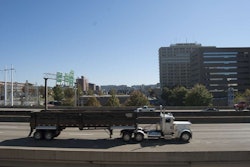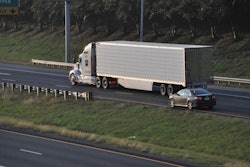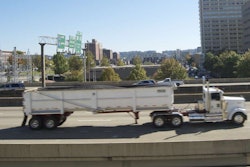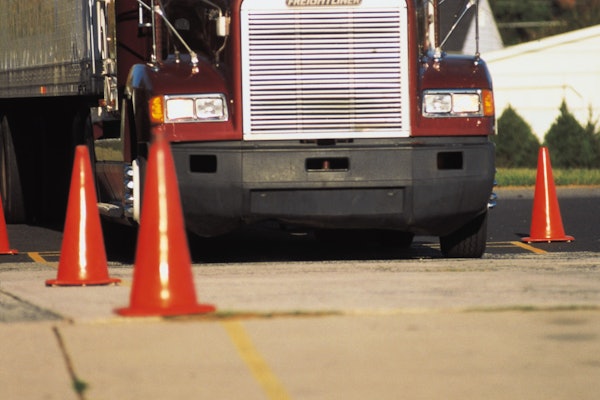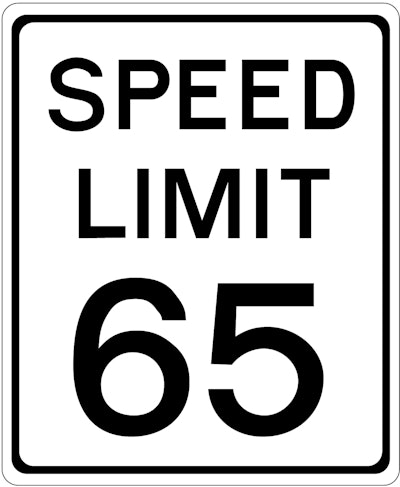
If any, what speed setting would be most fair for a speed-limiter final rule?
The source for the above chart is an OverdriveOnline.com poll we ran relative to the speed-limiter proposed rule shortly after it was introduced a couple weeks back. The largest share of reader respondents object to any speed setting, while an even larger share (47 percent) favor speed settings well above the speeds the Department of Transportation analyzed within the proposed rule’s text (68, 65 and 60 mph).
“Speeding by trucks is a non-issue,” noted reader Tim Begle in underscoring the most selected single response to the poll. Running “too fast for conditions is” an issue, he added, but “no speed limiter can fix that,” a view echoed by more than one reader voiced in the mailbag podcast at the head of the playlist above and below. Truck-involved fatality crash data in the FMCSA’s annual Large Truck and Bus Crash Facts report showed that the large majority of those fatalities (around 80 percent) between 2011 and 2013 occurred on roads with speed limits of 65 or below, by some interpretations underscoring Begle’s view.
Nearly half of Overdrive readers were against any speed limiter mandate whatsoever, which comes as no surprise given the volume of objections to the notion of a mandate over the year and more leading into its release.

As noted, the DOT’s proposal looked specifically at three speeds in its associated analyses – 60, 65 and 68 mph – but the other commonly cited speeds in the poll correspond to the highest speed limit in a few U.S. states (80 mph), the top-speed rating of most commercial truck tires (75 mph) and the more-common 70 mph limit.
Setting a governor artificially low creates a problem for drivers who undergo a steer-tire blowout, noted longtime trucker and writer Tim Brady. “78 mph — that’s what I had my governor set at. The purpose of having it that high is any driver needs about 7 to 8 mph left in the accelerator if he blows a front steer tire.” Re-establishing control of the vehicle is a matter of accelerating a bit, then utilizing trailer brakes, to take weight off of the front of the vehicle. “Anyone who runs against the governor isn’t a trucker but a steering-wheel holder,” Brady added, “and a danger to him-/herself and everyone else on the road.”
A few other views on the speed-limiter situation in response to the question of a potentially appropriate speed:
Via Facebook:
William McKelvie: 70/75. At those lower speeds they have suggested, if you need to pull away from a car that decides to race you instead of allowing you back over, like they should, you have the power to maneuver away without causing more problems. Seems more and more as of late, autos are doing the ‘let’s race the truck’ thing when they are in the right lane and we attempt a pass in the left when they are texting, not paying attention, going slower, etc.
Bradley D Coddington: My truck is governed at 71 and you still have issues with some idiots playing that game. The nice thing is the big carriers are still governed at the lower speeds, so it’s easier to get around the moving roadblocks at 70. But I think 70 to 75 would be the proper setting speed, because it also falls into the majority of maximum speed limits in the states. I believe there are only a couple that are higher than 75. [Five, in fact. –ed.]
Chuck Shaffer: The only reason that this is an issue is because the mega carriers don’t want anyone to have a speed advantage over them. They want the playing field leveled at their level instead of brought up to ours!
Via OverdriveOnline.com:
Jason Martin: The problem is inexperienced drivers in four-wheelers and trucks. … Invest in a good dash cam.
James C. Walker: The proposal for speed limiters for trucks in the USA comes from the large trucking companies and their organizations, and it has nothing whatever to do with safety. The goal is to increase the competitiveness of the big trucking firms with the independent truckers and small trucking firms that are both more efficient and have better safety records than the big companies. … Drivers in Michigan already have the unacceptable situation with trucks that meet Ontario rules with limiters. You have one truck in the right lane whose limiter produces a speed of 64 mph being passed in the left lane by another whose limiter produces 65 mph and the pass takes forever. And if the trucks hit a hill during the pass it gets a lot worse.
Contrast this with driving west of the Mississippi where there are few states with differential truck speed limits and very few trucks with speed limiters. These sorts of unacceptable situations caused by limiters are quite rare [there].
‘Midnight Hauler’: Police are the only speed limiter we need.




